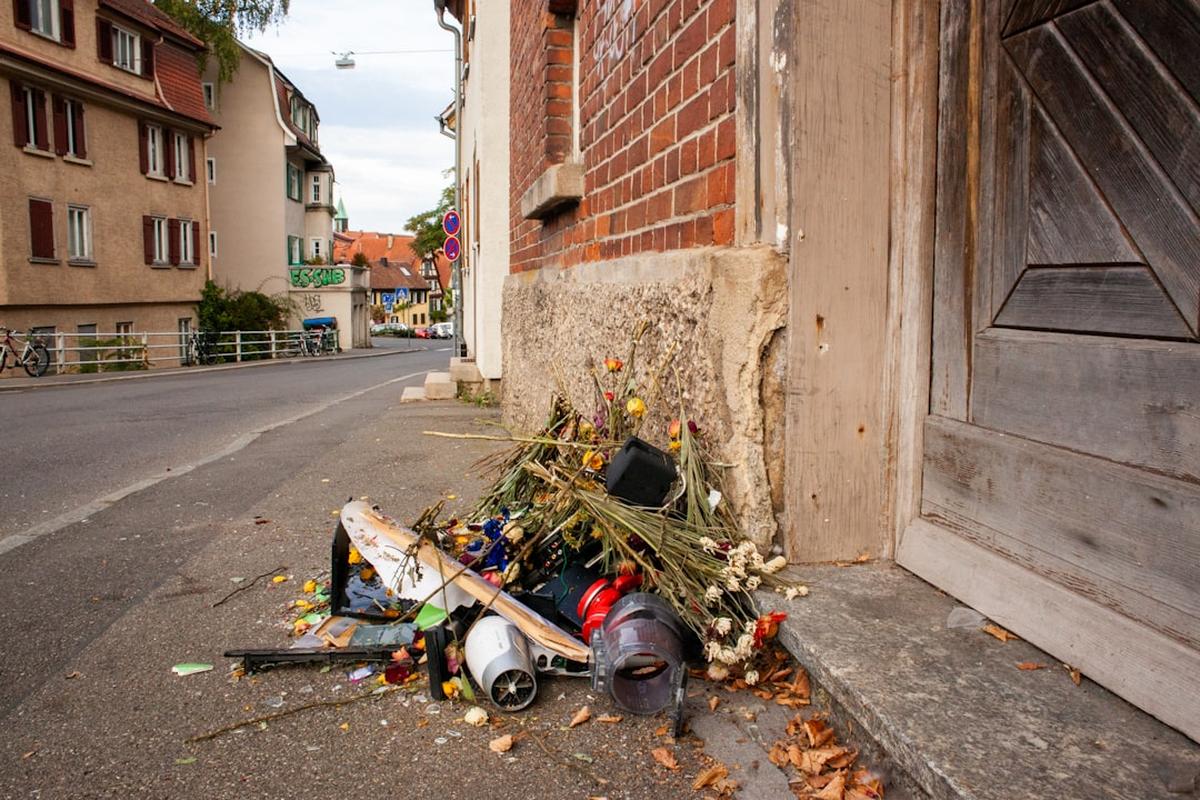Understanding Zero Waste Living
Zero waste living is a lifestyle choice that aims to reduce the amount of waste we produce. It’s about rethinking our relationship with materials and resources, and finding ways to reuse, recycle, or compost everything we bring into our homes. It’s a journey, not a destination, and every small step we take towards reducing our waste makes a difference.
The impact of waste on our environment is staggering. Landfills are overflowing, oceans are choked with plastic, and the air we breathe is polluted with toxins from waste incineration. By embracing a zero waste lifestyle, we can help to alleviate these problems and contribute to a more sustainable future.
In my own journey towards zero waste living, I’ve discovered that it’s not just about reducing waste. It’s also about living more intentionally, being mindful of our consumption, and finding joy in simplicity. It’s a journey that has transformed my life in many ways, and I’m excited to share my experiences and insights with you.
Bulk Goods: The Ultimate Eco-Friendly Products
One of the first changes I made on my zero waste journey was to start buying in bulk. Buying in bulk reduces packaging waste, saves money, and allows you to buy exactly the amount you need. Plus, it’s a great way to support local businesses and reduce your carbon footprint.
My first experience with bulk shopping was a revelation. I was amazed at the variety of products available, from grains and spices to cleaning products and personal care items. I brought my own containers, filled them up, and paid for the weight of the product. It was simple, satisfying, and surprisingly fun.
If you’re new to bulk shopping, here are a few tips to get you started:
- Bring your own containers. Glass jars, cloth bags, and reusable plastic containers are all great options. Just make sure to weigh your containers before you fill them so you only pay for the weight of the product.
- Start small. If you’re not sure about a product, buy a small amount to try it out. You can always come back for more.
- Plan ahead. Make a list of the products you need and stick to it. It’s easy to get carried away with all the options available!
Saying No to Plastic Bottles
Plastic bottles are one of the biggest contributors to plastic pollution. They take hundreds of years to decompose, and in the meantime, they leach harmful chemicals into our soil and water. By saying no to plastic bottles, we can significantly reduce our plastic waste and protect our environment.
In my own life, I’ve replaced plastic bottles with reusable alternatives. I carry a stainless steel water bottle wherever I go, and I’ve switched to shampoo and conditioner bars instead of bottled products. It was a bit of an adjustment at first, but now I can’t imagine going back.
If you’re looking to make the switch from plastic bottles to sustainable alternatives, here are a few tips:
- Invest in a good quality reusable water bottle. Look for one that’s durable, easy to clean, and the right size for your needs.
- Try shampoo and conditioner bars. They last longer than bottled products, and they’re great for travel.
- Look for refillable options. Many stores now offer refill stations for products like laundry detergent, dish soap, and body wash.
Investing in Cloth Produce Bags
Another simple change I made on my zero waste journey was to start using cloth produce bags. These reusable bags are a great alternative to the plastic bags typically used for fruits and vegetables. They’re lightweight, easy to clean, and they can last for years.
I’ve found that using cloth produce bags has not only reduced my plastic waste, but it’s also made my shopping trips more enjoyable. I love the feeling of filling my bags with fresh, vibrant produce, and I get a sense of satisfaction every time I bypass the plastic bag dispenser.
If you’re interested in incorporating cloth produce bags into your shopping routine, here are a few tips:
- Invest in a set of good quality bags. Look for bags that are durable, easy to clean, and the right size for your needs.
- Bring them with you every time you shop. Keep them in your car or your purse so you always have them on hand.
- Use them for more than just produce. They’re also great for bulk items, bread, and more.
Avoiding Produce Wrapped in Plastic
Plastic-wrapped produce is a pet peeve of mine. Not only is it unnecessary, but it also contributes to our plastic waste problem. Plus, it often costs more than unwrapped produce!
In my quest to avoid plastic-wrapped produce, I’ve learned to be flexible and creative. I choose loose fruits and vegetables whenever possible, and I’m not afraid to try new things. I’ve discovered a love for seasonal produce, and I’ve learned to appreciate the beauty and variety of nature’s bounty.
If you’re looking to avoid plastic-wrapped produce, here are a few tips:
- Shop at farmers’ markets. You’ll find a wide variety of fresh, local produce, and it’s usually not wrapped in plastic.
- Choose loose fruits and vegetables. They’re often fresher and cheaper than their plastic-wrapped counterparts.
- Be flexible. If your favorite fruit or vegetable is only available wrapped in plastic, look for an alternative. You might discover a new favorite!
Supporting Local Farmers
Supporting local farmers is a win-win. Not only do you get fresh, nutritious food, but you also support your local economy and reduce your carbon footprint. Plus, it’s a great way to connect with your community and learn more about where your food comes from.
I love shopping at my local farmers’ market. I’ve gotten to know some of the farmers, and I appreciate the hard work and dedication they put into growing our food. Plus, the produce is always fresh and delicious!
If you’re interested in supporting local farmers, here are a few tips:
- Find a local farmers’ market. They’re a great source of fresh, local produce, and they often have other products like bread, cheese, and honey.
- Join a CSA (Community Supported Agriculture) program. You’ll get a box of fresh produce every week, and you’ll support a local farmer.
- Buy direct from the farm. Many farms have farm stands or pick-your-own programs.
Avoiding Single-Use Plastics
Single-use plastics are a major contributor to plastic pollution. They’re used once and then thrown away, ending up in our landfills, oceans, and even our food chain. By avoiding single-use plastics, we can make a big difference in our waste output.
In my own life, I’ve made a conscious effort to eliminate single-use plastics. I bring my own shopping bags, coffee cup, and utensils wherever I go. I say no to plastic straws and takeout containers. And I’ve learned to live without many things that I once thought were necessities.
If you’re looking to reduce your single-use plastics, here are a few tips:
- Bring your own shopping bags. They’re more durable and can hold more than plastic bags.
- Invest in a reusable coffee cup. Many coffee shops offer a discount if you bring your own cup.
- Say no to plastic straws. If you need a straw, consider a reusable stainless steel or silicone one.
The Importance of Recycling
Recycling is an important part of zero waste living, but it’s not the solution to our waste problem. It’s a last resort for materials that can’t be reused or composted. That being said, recycling is still better than sending waste to the landfill, and it’s an important habit to develop.
In my own recycling practices, I’ve learned to be mindful and intentional. I take the time to clean and sort my recyclables, and I make sure to recycle everything I can. But I also try to reduce my waste in the first place, so I have less to recycle.
If you’re looking to improve your recycling habits, here are a few tips:
- Know what can be recycled in your area. Recycling rules vary by location, so make sure to check with your local recycling center.
- Clean your recyclables. Dirty items can contaminate the recycling process, so make sure to rinse out containers before recycling them.
- Reduce first, then recycle. The best way to reduce your waste is to not create it in the first place.
Ditching the Tea Bags
Did you know that many tea bags contain plastic? It’s used to seal the bags, and it can leach into your tea when you brew it. Plus, it means that tea bags can’t be composted or recycled.
I’m a big tea drinker, so this was a hard one for me. But I’ve found that loose leaf tea is not only more sustainable, but it also tastes better! I use a stainless steel tea infuser, and I buy my tea in bulk.
If you’re looking to make the switch from tea bags to loose leaf tea, here are a few tips:
- Invest in a good tea infuser. Look for one that’s easy to clean and big enough to allow the tea leaves to expand.
- Try different types of tea. Loose leaf tea comes in a wide variety of flavors and types, so don’t be afraid to experiment.
- Store your tea properly. Keep it in an airtight container in a cool, dark place to preserve its flavor.
Summary
Embracing a zero waste lifestyle has been a transformative journey for me. It’s changed the way I shop, eat, and live. It’s made me more mindful of my consumption and more appreciative of the natural world. And it’s given me a sense of purpose and fulfillment that I didn’t have before.
If you’re interested in adopting a zero waste lifestyle, I encourage you to start small. Choose one area to focus on, and make gradual changes. Remember, it’s not about being perfect. It’s about making better choices, one step at a time.
Frequently Asked Questions
What is zero waste living?
Zero waste living is a lifestyle choice that aims to reduce the amount of waste we produce. It’s about rethinking our relationship with materials and resources, and finding ways to reuse, recycle, or compost everything we bring into our homes.
How can I start buying in bulk?
Start by bringing your own containers to the store. Glass jars, cloth bags, and reusable plastic containers are all great options. Choose a few products to start with, and buy only the amount you need.
What are some alternatives to plastic bottles?
You can replace plastic bottles with reusable alternatives like stainless steel water bottles, shampoo and conditioner bars, and refillable containers for cleaning and personal care products.
How can I avoid plastic-wrapped produce?
Shop at farmers’ markets, choose loose fruits and vegetables, and be flexible. If your favorite fruit or vegetable is only available wrapped in plastic, look for an alternative.
How can I reduce my single-use plastics?
Bring your own shopping bags, coffee cup, and utensils wherever you go. Say no to plastic straws and takeout containers. And try to live without many things that you once thought were necessities.
How can I improve my recycling habits?
Know what can be recycled in your area, clean your recyclables, and reduce your waste in the first place. Remember, recycling is a last resort for materials that can’t be reused or composted.







